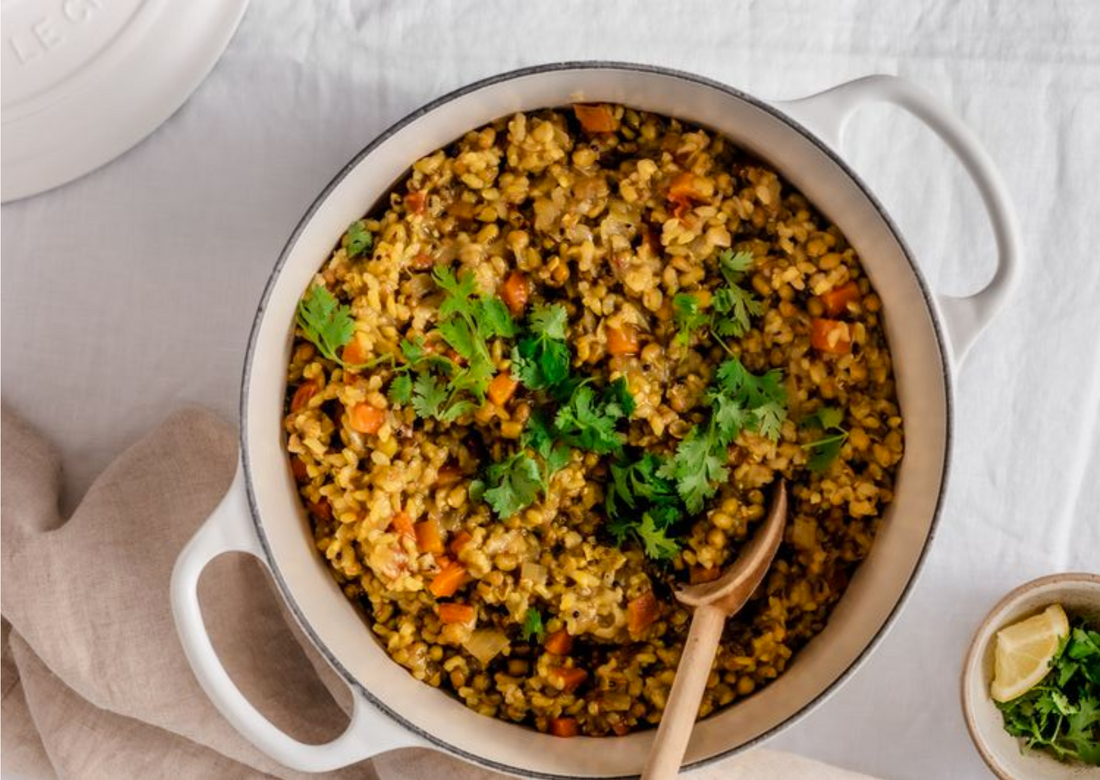
The Kitchari recipe - the detox mono diet
Share
Kitchari as an ancestral purification recipe in Ayurveda.
Considered in Ayurvedic medicine as one of the oldest healing systems, kitchari is a traditional purification and detox dish that facilitates the elimination of toxins accumulated in our body. It is often used as a single diet over two or three days.
Kitchari is delicious, nourishing, very digestible and light at the same time and is recommended whatever your dosha ( Vata, Pitta and Kapha) to help the digestive system to purify itself and eliminate toxins.
How to eliminate toxins in the body
The objective of Kitchari is to rest the digestive system, considered to be the most energy-intensive. The body will be encouraged to eliminate because it will have to draw on its reserves and synthesize the nutrients it needs.
The body uses a lot of energy during this phase so it is necessary to rest.
Remember that detox is accompanied by an overall routine: herbal teas, light physical activity, a course of supplements to help your body.
When to consume Kitchari?
Kitchari is recommended during detox periods to allow the body to regenerate. You can make this recipe in the following cases:
- Digestive disorders (remove legumes if poorly digested)
- Excessive food or alcohol
- Ovulation period and start of period for PMS
- Acne and skin problems
- Convalescence period
The traditional Kitchari recipe
The traditional Kitchari recipe consists of mung beans and brown rice, accompanied by seasonal vegetables.
It is accompanied by spices such as turmeric and ginger, coriander, cumin, garlic, cinnamon which have detoxifying, anti-inflammatory and stimulating properties and which facilitate digestion.
Kitchari provides a complete source of protein, fiber and good blood sugar levels.
Ingredients :
- 2 doses of brown rice (1 dose = 1 glass for 2 people)
- 1 dose of ORGANIC mung beans
- 1 seasonal green vegetable
- 1/2 tsp of each: cardamom, turmeric, ginger (powdered or grated), cumin
- 2 cloves garlic
- 1 tbsp of Ghee
- Soak the mung bean seeds for 12 hours beforehand in a salad bowl filled with water + 1 teaspoon of baking soda. Without it, the rice and seeds will not take the same cooking time.
- Brown the spices in 1 tbsp of Ghee for 2/3min over high heat, then add the garlic. Brown for 1 min.
- Add the rice and mung beans or legume of your choice.
- Add water, cover and reduce heat to low. Leave to cook for around 10 minutes
- Add the green vegetable over the last 10 minutes, still covered and over low heat.
- After 20 minutes of cooking, the water is normally completely absorbed by the dish, the rice grains become loose and do not stick.
- All you have to do is serve by adding a nice handful of fresh coriander or flat-leaf parsley.

